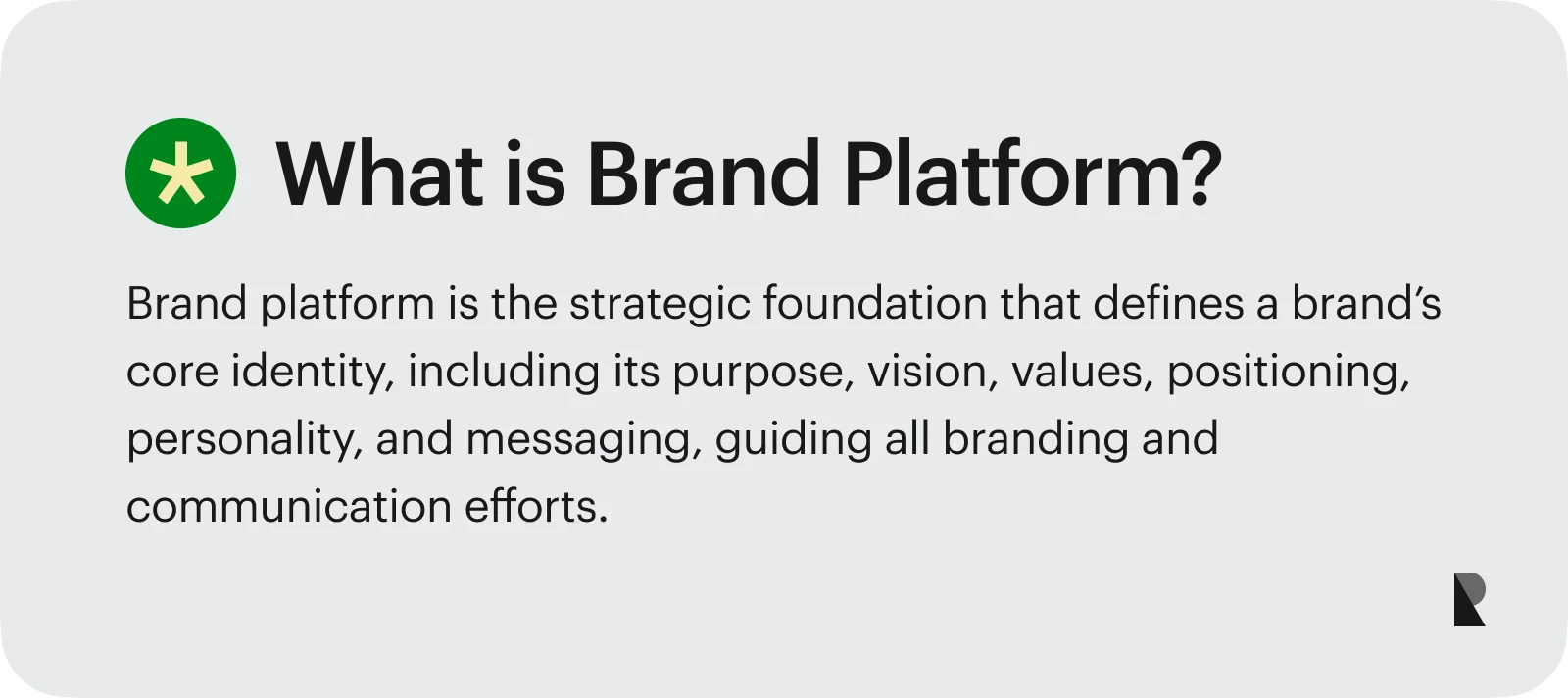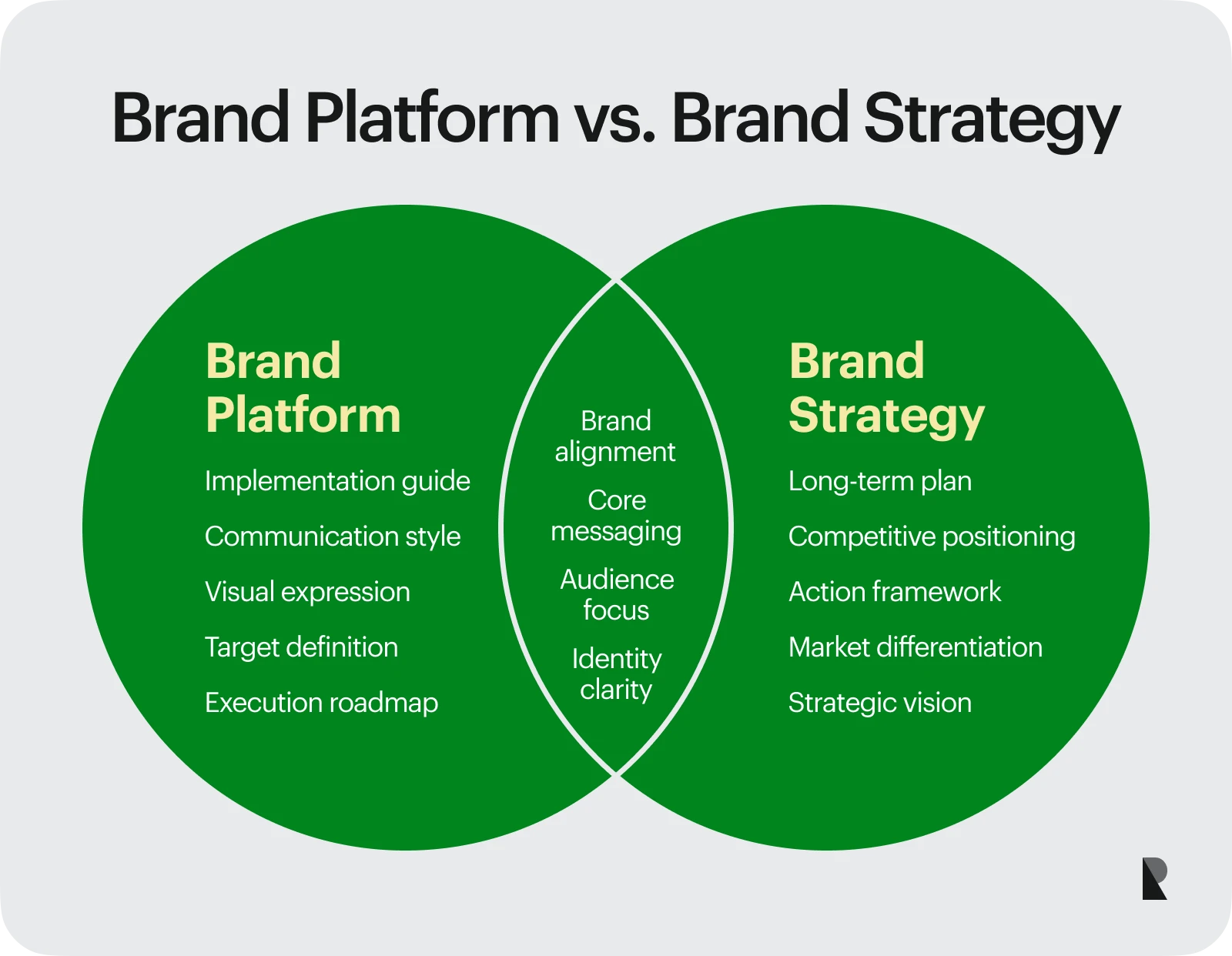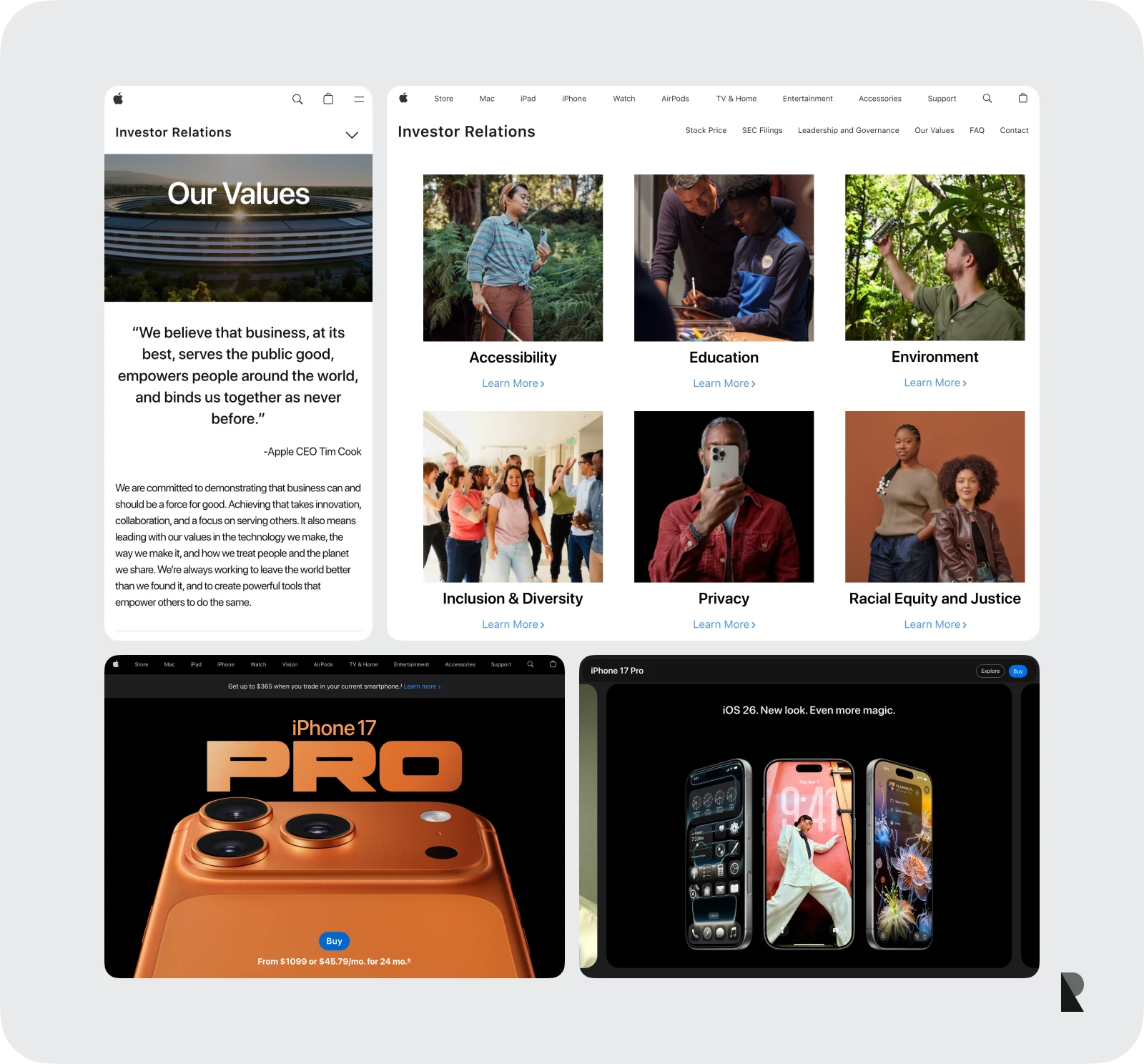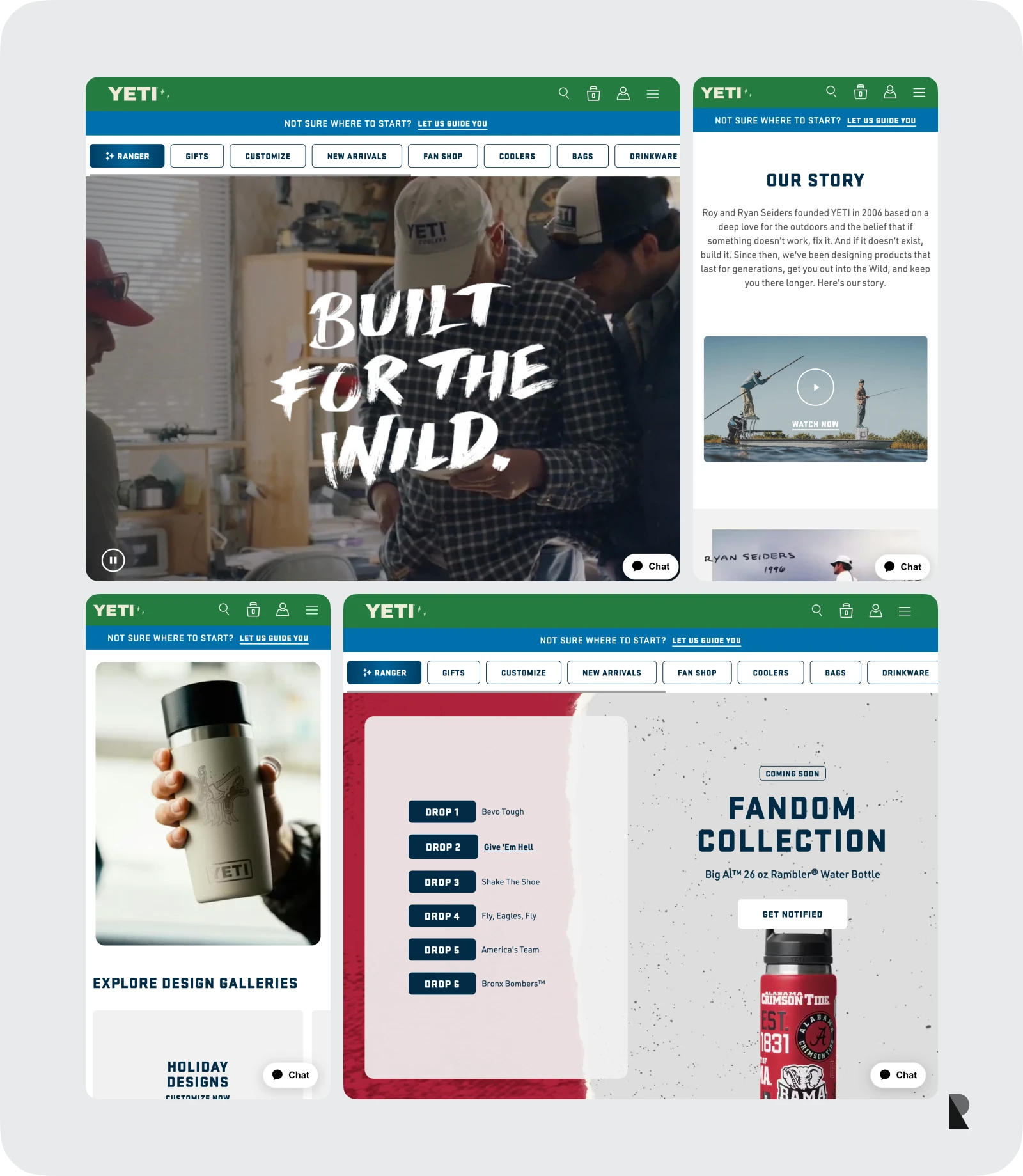
People interact with more than a dozen brands each day, presenting them with endless choices. This makes branding crucial in swaying and guiding consumer purchasing decisions. But what truly sets apart the iconic brands from the forgettable ones?
Aside from a catchy and memorable brand identity and products that deliver, the backbone of a standout brand is its brand platform. This strategic framework allows companies to build a unique, consistent, and memorable brand presence that makes them shine in a crowded marketplace.
Read on as we peel back the curtain and learn more about the whats, whys, and hows of crafting an effective brand platform.
Defining Brand Platform
A brand platform is a detailed blueprint that guides every strategy or marketing campaign towards the end goal. It keeps you on track, making sure your brand embodies its purpose, vision, and core values in every decision. Without a brand platform, a brand can easily lose its identity, especially in a crowded market.
Now, let's examine how brand platforms influence brand strategies and positioning.
Brand platform and brand strategy
A brand strategy is an actionable, long-term plan that outlines how an organization can effectively showcase its identity and competitive advantages, helping it stand out. The branding platform serves as a guide for bringing the brand strategy to life.
For example, a company's mission statement is to provide modern, fun, and eco-friendly furniture. In that case, the brand platform will dictate how the company communicates about its products, its target audience, and its visual style.

Brand platform and brand positioning
Brand positioning guides how you establish your company by highlighting what makes you special. A defined brand platform can help convey your brand's story and emphasize aspects that matter most to your target audience.
A brand platform is a detailed blueprint that guides every strategy or marketing campaign towards the end goal. It keeps you on track, making sure your brand embodies its purpose, vision, and core values in every decision. Without a brand platform, a brand can easily lose its identity, especially in a crowded market.

Why Is a Brand Platform Important?
A brand platform is the skeleton that supports your brand as you establish its identity, vision, mission, and brand personality. Without it, it's hard to create a brand that aligns with its values.
The company might confuse people in its communication campaigns, and your team may also not understand what your brand is about. A brand platform helps address this by keeping everything clear, simple, and connected.

That said, a company should consider brand platform right from the start, just when it is figuring things out with brand development and strategy formulation. That way, everything the company does fits together nicely as it uses the brand platform as a guide to every decision it makes.
Hire a reliable brand strategy agency to help you get started. Meanwhile, let’s explore the fundamental steps in building brand platforms.
How to Create a Strong Brand Platform
Creating a brand platform entails knowing who you're talking to, your purpose, brand values, and how you want to be perceived. Together, these foundational elements can shape a brand platform that resonates with the right audience and stands out from the crowd.

Step 1: Conduct a Brand Audit
Knowing where your brand currently stands can be beneficial in creating brand platforms. This is achieved through a process called a brand audit, which thoroughly evaluates a company's current position, its competitors, and public perception to identify gaps, opportunities, and ways to differentiate itself. A brand audit also examines internal processes, culture, and communication to check for alignment.
With a thorough understanding of your company's strengths, weaknesses, and market perception, you can gather valuable insights on how to define your brand identity, messaging, values, and target audience effectively. Think of it as setting a benchmark and discovering opportunities and threats that can inform your brand strategy.
Some tools you can leverage to audit your brand are competitor analysis, customer surveys, and internal stakeholder interviews.
Step 2: Define values and mission
By definition, a brand mission refers to the ultimate goal you want your company to achieve—whether that's providing a unique product, empowering consumers, or saving the planet, among others. It is the reason your company exists. Meanwhile, brand values refer to the beliefs your company stands for, like authenticity, reliability, diversity, and integrity, amalgamated in a single vision statement. Turn to your team and stakeholders and ask for feedback on the values they think you should have, considering the brand mission.
These two integral elements are vital to brand platforms, so companies know which direction to build towards. The brand platform ensures that everything a company does reflects its brand values and mission, supporting sound decision-making.
Step 3: Identify brand positioning
Brand positioning is the combination of your brand's unique value proposition and how you want people to remember you. In this phase, ask yourself what makes your company better or different than competitors. This could be through your pricing, product quality, or other unique features.
Conducting market research on your target audience, including perceptual mapping, focus groups, and other research insights, becomes vital in enhancing your understanding of the market and setting expectations. This will help you develop a clear and achievable brand positioning that resonates with your audience.
Step 4: Set visual and verbal guidelines
A consistent brand look, feel, and sound is essential in driving brand awareness and recognition. Think of it like giving your brand a personality and style that is distinct and consistent everywhere. This way, people can identify you quickly in a crowd.
To do this, you'll need a brand guideline that contains rules for designing and using your logo, color palette, typography, and imagery. The guideline will also explain how your brand speaks—friendly, formal, funny, or serious? It will include brand messaging guidelines to ensure every communication uses key phrases and taglines correctly and communicates your brand's benefits.
Your visual and verbal guidelines should contain examples that are easy to follow, especially for non-designers. Finally, keep it updated by regularly reviewing guidelines.
Step 5: Implement internally
Your brand platform's success is anchored on how well your team implements it. Without a clear and centralized brand platform document, different teams and departments may have their own interpretations. This can lead to inconsistent brand application across the company.
Make sure that the document includes the brand foundation (mission, vision, and values), brand positioning, messaging, and brand application, or how and where to use it. You also need to involve your team and ask for their feedback. When people feel like they play an integral role in shaping your brand, they are more likely to be proactive in creating and adhering to your branding platform.
It is essential to provide the right resources, like offering brand training and workshops, and creating comprehensive yet easy-to-understand brand guidelines. There should also be an alignment between department leaders and their teams.
Step 6: Cross-channel integration
Choosing channels for your brand depends on where your target audience can be found. For instance, they may use Instagram more often than Facebook. If you're targeting B2B clients, then it might be more effective to reach them via email or websites. Start with two to three channels and master them before adding more.
Trends also change fast. New apps and other channels are popping up all the time, so be quick to identify what's working and what needs changing. But always stay true to your branding.
This is where a comprehensive brand platform document is crucial. It contains all the dos and don'ts when using brand assets and communication collateral. The brand platform document ensures consistency and coherence in branding, no matter the channel.
Step 7: Monitor and develop
The brand platform is an evolving map affected by changes in consumer behavior, industry trends, competitors, and business goals. These changes can muddle your identity and weaken your brand.
With these in mind, you need to keep your brand platform in check. Schedule regular brand assessment and track brand recognition, consistency score, and emotional connection with your audience. Is your messaging still relevant to your audience and goals? Do your campaigns align with your brand ethos?
Brand audits should also be done periodically to monitor the changes in brand interest—rising or falling—before it's too late! These steps enable you to recalibrate your brand accordingly and develop better offerings that attract loyal customers. While staying on trend is important, it's more vital to keep a strong and memorable brand for longevity.
You can work with top branding agencies to implement the above steps successfully.
Brand Platform Examples and Tips You Can Implement
Now, how do the fundamentals of brand platforms apply in the real world? Here are a few of the inspiring examples of brand platforms that demonstrate how companies have built unique and recognizable brands.
Apple
Apple has carved a unique identity in the tech space through its modern, sleek, and minimalist aesthetic. It keeps everything clean and provides a seamless and exclusive ecosystem that connects its products. While the brand champions itself as an innovator, Apple makes its technology accessible with its low-barrier designs. Meaning, even tech beginners can use their products and understand their language.

Why it works
Apple's brand platform is centered on delivering an exclusive and seamless experience. It strips away the complexities often associated with tech brands and attracts customers. There is also a strong community of users, resulting in Apple's cult-like following.
Apple showcases the value of a brand platform focused on a human-first experience. It highlights how simplicity wins and the power of creating a tight-knit community. These efforts keep customers excited and successfully differentiate Apple from other tech brands.
Uniqlo
Uniqlo is a Japanese brand known for integrating science in its design. The brand is popular for its high-quality, functional, yet affordable clothes. No wonder it attracts customers of all ages who are looking for timeless pieces that adapt to local tastes—from Japan to NYC.

Why it works
Uniqlo's brand platform is built on four key pillars: LifeWear, timeless design over trendy styles, innovative materials, and affordable prices. Let's go through each pillar below.
- LifeWear: Uniqlo focuses on creating everyday practical clothing that fits seamlessly into any lifestyle, like a versatile capsule wardrobe.
- Minimalist and timeless style: Uniqlo elevates basic wear with subtle details, like offering them in over 10 colors that can be styled for any season.
- Innovative material: Uniqlo is known for advanced fabrics like HEATTECH (thin material that traps body heat), AIRism (breathable clothes), and UV Protection (blocks the sun without needing sunscreen) clothes, to optimize function and comfort.
- Affordable price: Uniqlo clothes are high-quality without the premium price tag.
Uniqlo may not be as flashy and ubiquitous as Nike and other fast fashion brands. But the brand excels in providing quality products that fit every lifestyle at affordable prices. This helps the brand win the trust and support of its customers. Present in several countries, Uniqlo remains consistent in its branding but maintains flexibility, thanks to an effective brand platform.
Google isn't just a search engine but an ecosystem of innovative tech products that help people communicate, work, and live better. Despite its diverse product offerings, Google remains a leader in the market.

Google remains consistent across all of its sub-brands. Image via Google
Why it works
Google's brand platform ensures the company's decisions align with its core mission, which is to "organise the world's information and make it universally accessible and useful." Meaning, people using their products can find what they need quickly, making their lives easier.
The company's brand platform is structured with a brand identity that is minimal but friendly, minus the technical jargon. Google also ensures its products feel human and not robotic. For example, Google Assistant can crack jokes and sing songs, not just spout facts from the internet.
Finally, the brand evolves without losing its core identity—from search engine to AI leader. This makes it more challenging for competitors to disrupt its success.
YETI
Before trendy Hydro Flasks and Stanley coolers came into the picture, Yeti was the leading brand in the category. Thanks to its brand platform, Yeti remains famous for its tough and reliable outdoor coolers and cups among adventurous people. The brand became a status symbol.

Why it works
While Yeti has one of the most durable products in the market, it has shaped its identity around its customers. The brand shows how its products fit the lifestyle of its users, especially the community of outdoor lovers. In effect, Yeti can charge premium prices that customers are willing to pay because they trust the quality and performance of the products the brand delivers.
The bottomline
Chasing immediate success often leads brands astray. Instead, it requires a strong brand platform that aligns with a company's identity, values, and positioning. Just take a look at leading brands like Google, Apple, Uniqlo, and YETI that have a cohesive presence that sets them apart. And you can be like them, too!
The key is consistently evaluating and refining your brand platform. Partner with branding experts to identify areas for improvement and make strategic adjustments as you work your way towards success.
Nov 6, 2025
